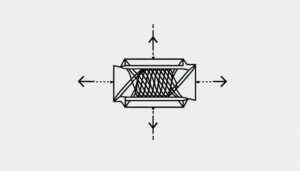Which Car Brand Has a Horse Symbol?
Car symbols with horses, such as Ferrari's prancing horse and Ford's Mustang, are iconic in automotive branding. These symbols denote power, speed, and nobility, evoking feelings of adventure and high status.
Ferrari's logo symbolizes agility and prestige, while Ford's Mustang captures untamed power and freedom. Porsche's Stuttgart crest also features a horse, reflecting strength and elegance.
Historically, horses symbolize strength, freedom, and prestige, influencing brand identity and consumer perception. These emblems are pivotal in conveying luxury and exclusivity.
For a deeper understanding of the cultural significance and modern interpretations, additional insights await.
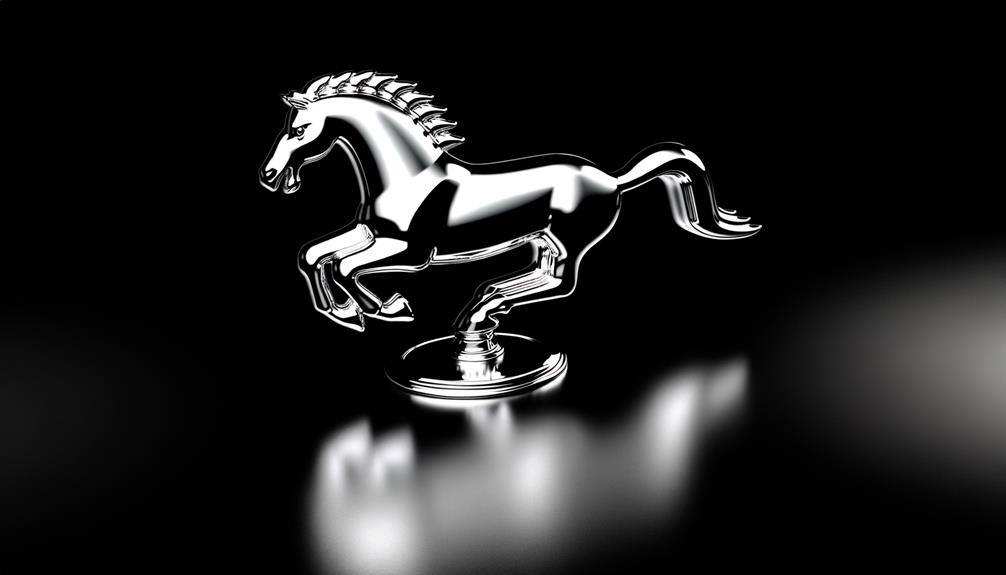
Key Takeaways
- Ferrari's logo features a prancing horse symbolizing agility, prestige, and high performance.
- Ford Mustang uses a galloping horse to represent untamed power, freedom, and American muscle car heritage.
- The Porsche logo includes a rearing horse, indicating speed, power, and Stuttgart's historical coat of arms.
- The Baojun brand from China has a leaping horse in its emblem, reflecting dynamism and modernity.
- Kamaz, a Russian truck manufacturer, utilizes a horse symbol to signify strength, endurance, and reliability.
Ferrari's Prancing Horse
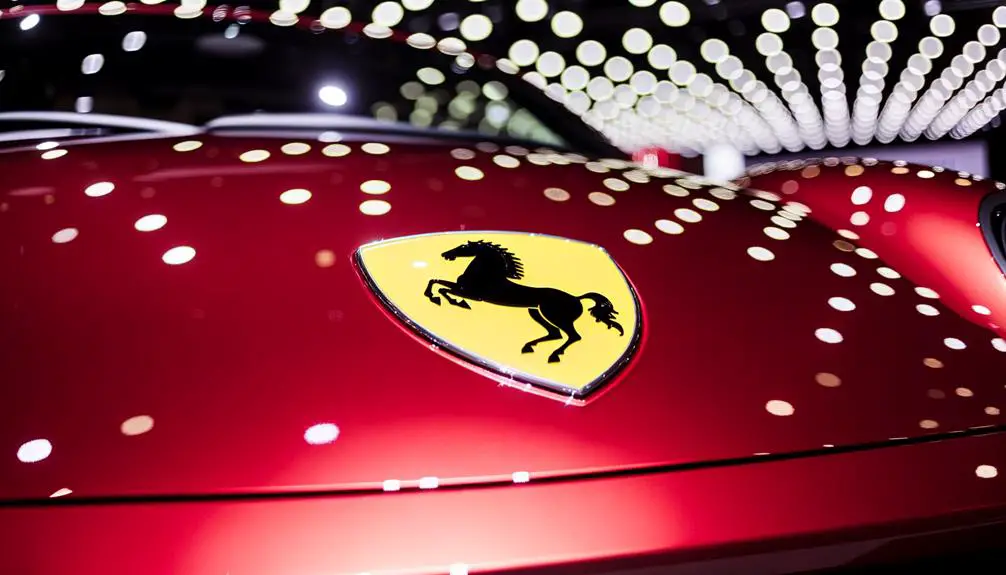
Why is Ferrari's iconic Prancing Horse emblem so deeply ingrained in the automotive world as a symbol of luxury and performance?
The emblem traces its origins to World War I, inspired by Italian ace pilot Francesco Baracca, whose aircraft bore a similar horse. Enzo Ferrari adopted the symbol in 1929, combining it with the vibrant yellow of Modena, his birthplace.
The Prancing Horse encapsulates Ferrari's commitment to excellence, innovation, and exclusivity. This emblem, meticulously crafted, adorns vehicles renowned for their engineering prowess and unparalleled aesthetics.
It has become synonymous with high-performance sports cars, evoking prestige and an enduring legacy in the annals of automotive history. Ferrari's emblem is not just a logo; it is an embodiment of automotive artistry.
Ford Mustang Emblem
The Ford Mustang emblem, featuring a galloping horse, has undergone significant evolution since its introduction in 1964. This iconic symbol not only represents speed and freedom but also embodies the spirit of the American muscle car.
Analyzing the emblem's iterations reveals insights into the brand's strategic design choices and the cultural significance attributed to the Mustang over the decades.
Evolution of Mustang Logo
Few symbols in the automotive world have experienced as iconic a transformation as the Mustang logo, which has seen a number of stylistic improvements since its inception. The logo has evolved from a simple horse emblem to a more intricate and dynamic representation, reflecting the brand's growth and the car's increasing performance capabilities.
| Year | Design Change | Significance |
|---|---|---|
| 1964 | Original galloping horse | Symbol of freedom and speed |
| 1974 | Sleeker, more aerodynamic horse | Emphasis on modernity and refinement |
| 1994 | Detailed musculature added | Showcasing power and strength |
| 2005 | Streamlined, aggressive stance | Reflecting a new era of performance |
| 2015 | Enhanced, three-dimensional look | Modern appeal and technological prowess |
These improvements signify Ford's dedication to innovation while honoring the Mustang's heritage.
Symbolism Behind Horse Emblem
Ford's Mustang horse emblem serves as a powerful symbol of freedom, speed, and the untamed spirit of the American frontier.
This emblem, chosen for its dynamic portrayal of a galloping horse, epitomizes several key attributes:
- Freedom: The wild horse represents the boundless American landscape and the unyielding desire for independence.
- Speed: Capturing the horse in mid-gallop, the emblem conveys the performance and agility that the Mustang brand stands for.
- Heritage: The horse harkens back to the mustangs of the American West, evoking ruggedness and resilience.
Porsche's Stuttgart Crest
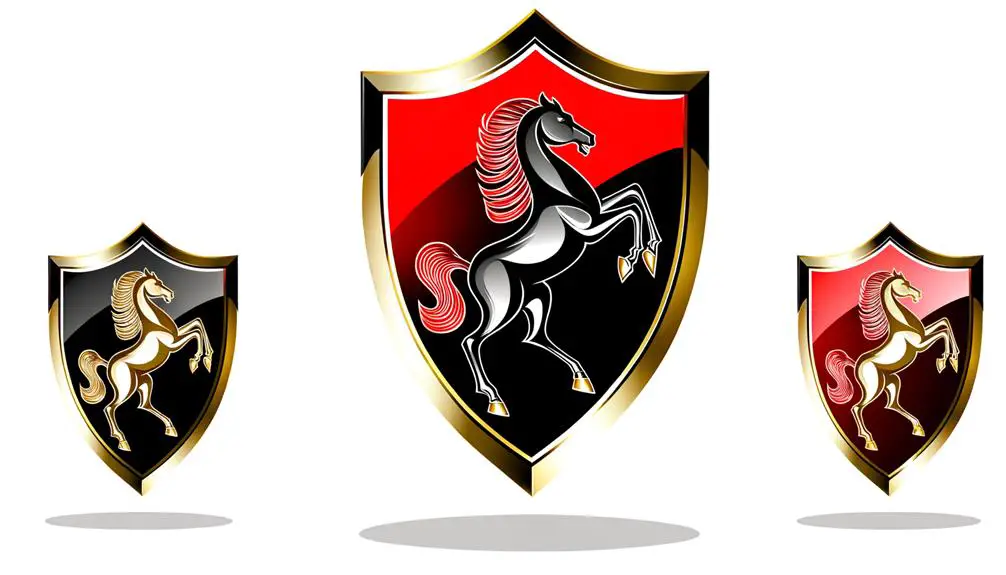
Porsche's Stuttgart crest, featuring a prancing horse and antlers, symbolizes the brand's heritage and its deep-rooted connection to the city of Stuttgart. The crest's elements are meticulously designed to reflect both the city's and the company's rich histories.
The prancing horse is derived from Stuttgart's city seal, which itself references the city's origin as a stud farm ('Stuttengarten' in German). The antlers are borrowed from the coat of arms of Württemberg-Hohenzollern, underscoring regional pride. The black and red stripes signify the colors of the state of Baden-Württemberg.
This emblem, introduced in 1952, is not merely decorative but serves as a confirmation to Porsche's commitment to its roots, blending local heritage with global automotive excellence.
Origin of Horse Symbols
The incorporation of horse symbols in car logos is deeply rooted in the historical significance of horses as embodiments of power, speed, and nobility.
This iconography has been strategically employed by automotive brands to evoke these qualities, creating a strong associative link between the vehicle and the esteemed attributes of the horse.
Analyzing the historical and cultural contexts of these symbols provides insight into their enduring appeal and effectiveness in brand identity.
Historical Significance of Horses
Throughout history, the horse has been a powerful symbol representing strength, freedom, and nobility, deeply influencing cultural and iconographic traditions worldwide. This majestic creature has played pivotal roles in various civilizations, serving as emblems of power and prestige. The historical significance of horses can be encapsulated in their association with:
- Mythology and Religion: Horses appear in numerous myths and religious texts, often depicted as divine or semi-divine beings.
- Military Valor: From ancient cavalry units to medieval knights, horses have been indispensable in warfare, symbolizing bravery and strategic prowess.
- Economic and Social Status: Owning horses historically signified wealth and social standing, reflecting an individual's authority and influence.
These elements underscore the enduring legacy of the horse as a cultural icon.
Iconography in Car Logos
Iconography in car logos often harnesses the symbolic power of the horse to convey attributes such as speed, elegance, and dynamism.
Historically, the horse has been a symbol of nobility and power, traits that automotive brands wish to imbue in their vehicles.
For example, Ferrari's iconic prancing horse, derived from the emblem of Italian World War I pilot Francesco Baracca, evokes a sense of agility and prestige.
Similarly, the Mustang logo by Ford captures the essence of untamed power and freedom, resonating with the American spirit.
Symbolism of the Horse
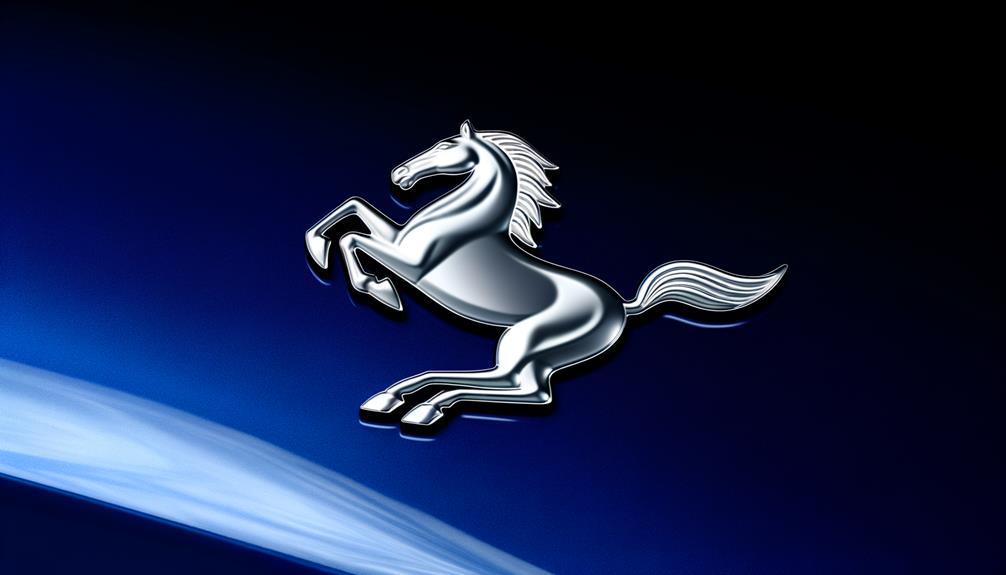
Horses, often seen as symbols of power and freedom, have been intricately woven into the fabric of various cultures and their iconographies. Throughout history, the horse has carried profound symbolic meanings, often reflecting societal values and aspirations. Its representation in art and emblems captures the essence of:
- Strength and Endurance: Horses are revered for their physical prowess and relentless spirit.
- Nobility and Prestige: Historically, horses have been associated with royalty and the elite, symbolizing high status.
- Freedom and Adventure: Their untamed nature and swiftness evoke a sense of exploration and liberation.
Understanding these symbolic dimensions helps in appreciating why the horse remains an enduring figure in modern iconography, especially in contexts where these qualities are highly valued.
Impact on Brand Identity
The profound symbolic significance of horses, embodying strength, nobility, and freedom, has a direct influence on brand identity, particularly in the automotive industry. Car manufacturers utilize horse imagery to evoke feelings of power, heritage, and dynamic motion, thereby enhancing their brand's prestige and attractiveness. This emblematic association fosters an emotional connection with consumers, reinforcing perceptions of performance and luxury.
| Aspect | Emotional Impact |
|---|---|
| Strength | Confidence, Reliability |
| Nobility | Prestige, Excellence |
| Freedom | Adventure, Innovation |
| Heritage | Authenticity, Trust |
| Dynamic Motion | Excitement, Modernity |
These attributes, meticulously embedded in brand identity, resonate profoundly with consumers, elevating brand loyalty and differentiation in a competitive market.
Modern Interpretations
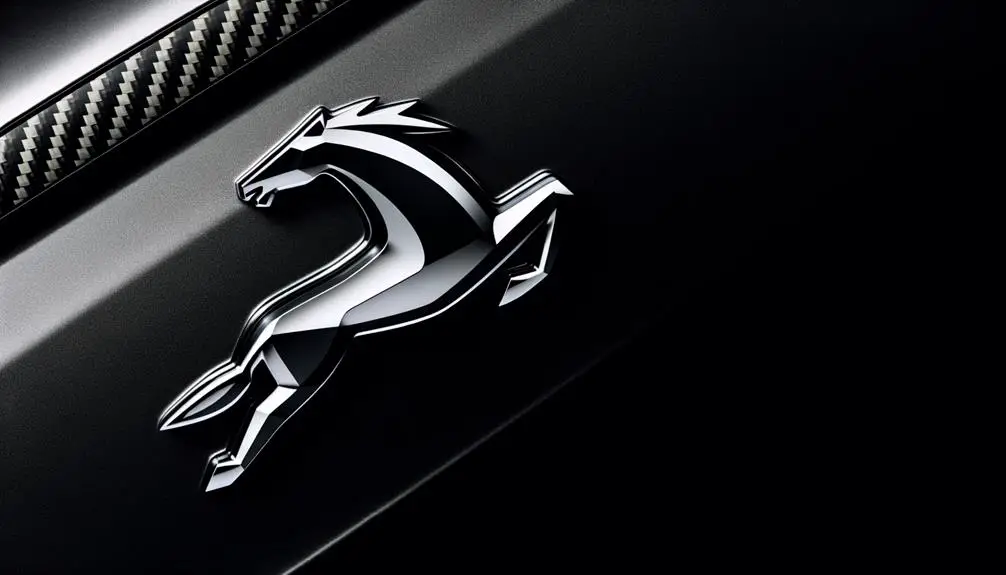
In contemporary automotive branding, the horse symbol is reinterpreted to align with evolving consumer values and technological advancements. Modern car manufacturers leverage this iconic emblem to convey a range of sophisticated attributes, moving beyond mere speed and power.
- Sustainability: The horse symbol is now often associated with eco-friendly technologies, representing a balance between performance and environmental responsibility.
- Innovation: By integrating the horse into sleek, futuristic designs, brands emphasize cutting-edge engineering and state-of-the-art technology.
- Luxury: The emblem is frequently employed to denote exclusivity and premium quality, appealing to discerning consumers seeking elite status.
These nuanced interpretations guarantee the horse symbol remains relevant in a rapidly changing automotive landscape, resonating with contemporary audiences.
Cultural Significance
How does the horse symbol, deeply ingrained in various cultural narratives, continue to impact and enhance modern automotive branding? The horse, a timeless emblem of power, freedom, and speed, resonates across cultures, providing automotive brands with a universally recognized icon. This cultural resonance boosts brand identity and consumer connection, as demonstrated by the following brands:
| Brand | Country | Cultural Significance |
|---|---|---|
| Ferrari | Italy | Embodies speed and prestige |
| Ford Mustang | USA | Represents freedom and adventure |
| Porsche | Germany | Symbolizes engineering excellence |
| Pegaso | Spain | Reflects mythological heritage |
| Baojun | China | Conveys strength and reliability |
These brands adeptly harness the horse's symbolic power, thereby crafting a compelling narrative that transcends geographic boundaries.
Future of Horse Logos
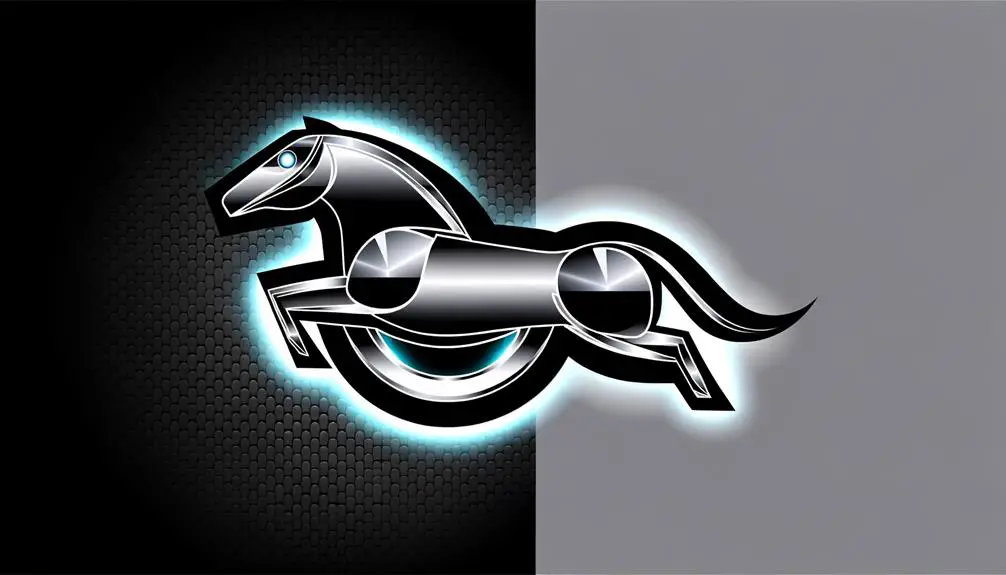
Building on the deep-rooted cultural significance of horse symbols, the future of horse logos in the automotive industry hinges on evolving consumer values and technological advancements. As the industry shifts toward sustainability and digital innovation, these iconic emblems must adapt to stay relevant.
- Sustainability Focus: Companies may redesign horse logos to reflect eco-consciousness, using materials and themes that emphasize green technology.
- Digital Integration: Enhanced digital interfaces in vehicles could feature dynamic horse logos that change based on driving conditions or user preferences.
- Cultural Resonance: Leveraging the historical prestige of horse emblems, brands may further localize designs to resonate with diverse global markets.
This evolution underscores the enduring appeal of horse symbols while aligning with contemporary trends.
Conclusion
In examining the emblematic use of the horse across Ferrari, Ford Mustang, and Porsche, it becomes evident that the horse functions as a powerful symbol, galloping through the annals of automotive history with grace and strength.
These logos not only reflect the brands' heritage but also their aspirations. As cultural icons, they continue to evolve, embodying speed, freedom, and prestige.
The horse, as a timeless metaphor for unbridled power, remains central to their enduring legacy and future innovation.

